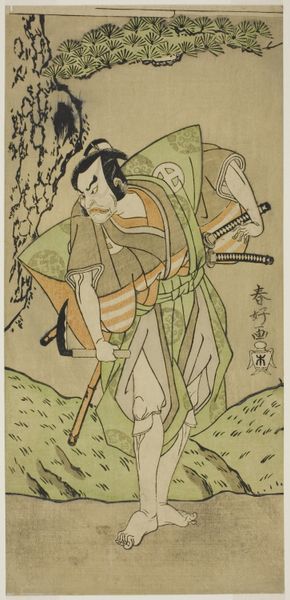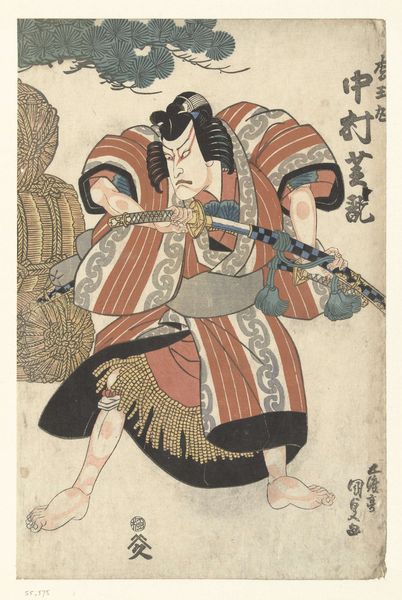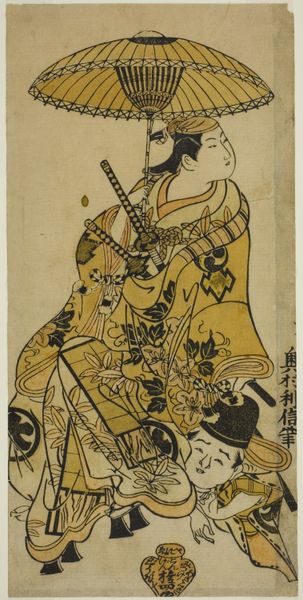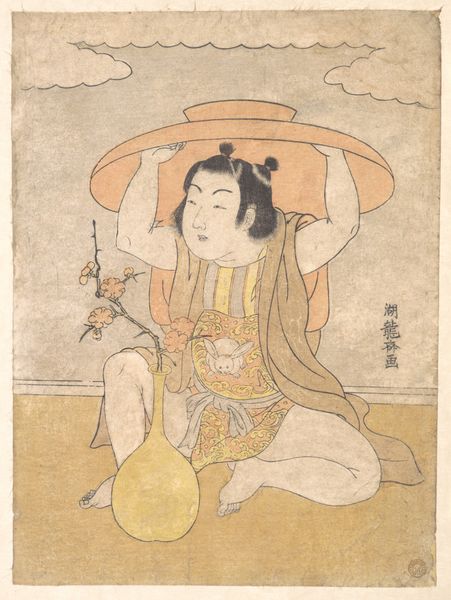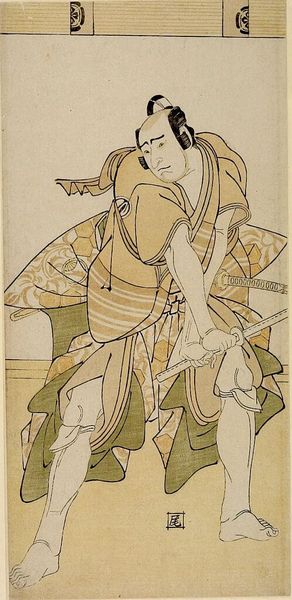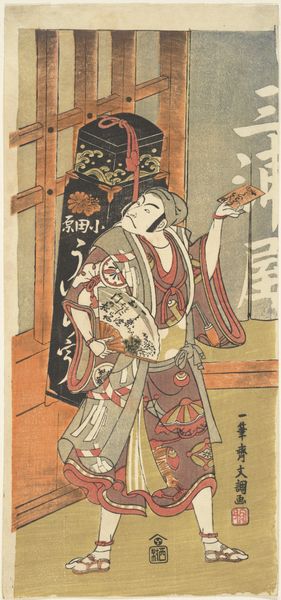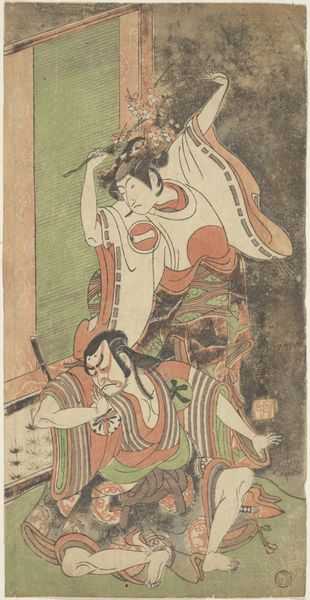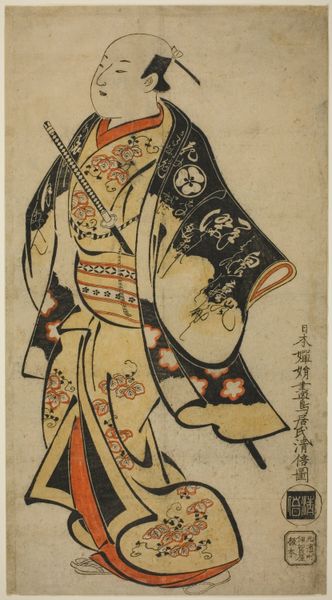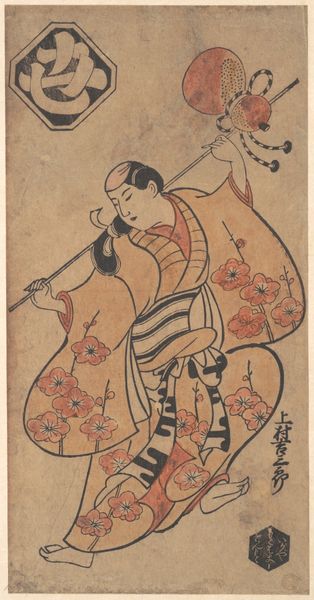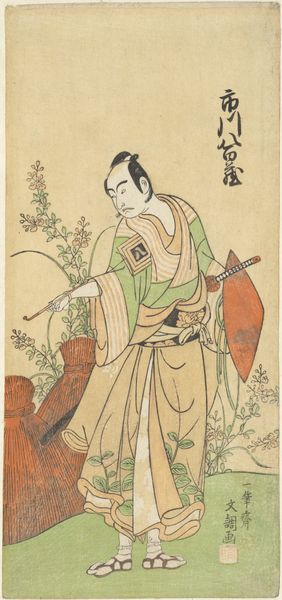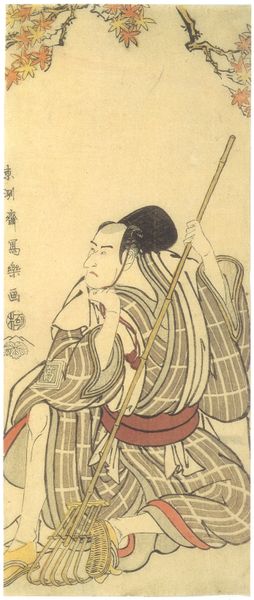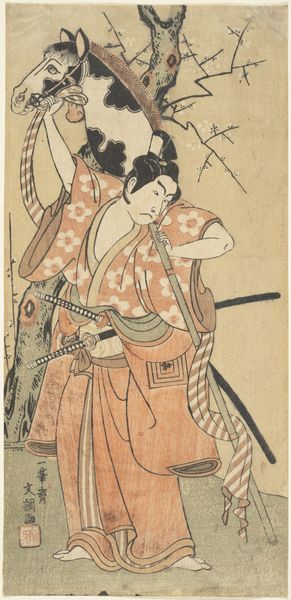
The Actor Ichikawa Yaozo II in the Role of Soga no Goro 1762 - 1782
0:00
0:00
print, woodblock-print
#
narrative-art
# print
#
asian-art
#
ukiyo-e
#
figuration
#
woodblock-print
#
history-painting
#
sword
Dimensions: H. 12 7/8 in. (32.7 cm); W. 6 in. (15.2 cm)
Copyright: Public Domain
Editor: We’re looking at "The Actor Ichikawa Yaozo II in the Role of Soga no Goro," a woodblock print by Katsukawa Shunko, likely created between 1762 and 1782. The dynamic poses and intense expressions give it a feeling of drama and power, almost like a freeze-frame from a play. What do you see in this work? Curator: Beyond the aesthetic qualities, it's fascinating to consider the social context. Ukiyo-e prints like these served as popular media in Edo-period Japan. They brought the elite world of the Kabuki theater to a broader audience. These weren't simply portraits; they were promoting and solidifying the popularity of actors like Ichikawa Yaozo II, making celebrities out of them. It makes me wonder: who had access to these prints, and how did they shape the public’s perception of the actor and the play itself? Editor: So, it’s not just art, but also advertisement and, in a way, celebrity culture. I'm curious, how would the political climate affect art during this time? Curator: That's a crucial question. The Tokugawa shogunate, while seemingly restrictive, had its own performance of power that these images play into. Kabuki, initially seen as subversive, was eventually regulated and incorporated. These prints then reflect that controlled performance. They simultaneously showcase artistic freedom within very prescribed boundaries, serving specific cultural functions while subtly reflecting broader political and social tensions. Do you think this control allowed these prints to gain broader influence? Editor: Absolutely. It seems like understanding the political framework is crucial for interpreting this artwork beyond its face value. I see now the artist isn't simply depicting a play, but also contributing to larger conversations about power and performance within Japanese society. Curator: Precisely. Analyzing its reception and function throughout history reveals layers of meaning embedded within this dynamic image. Editor: This has really broadened my perspective; seeing this piece as a cultural artifact reflecting power dynamics makes it so much more compelling.
Comments
No comments
Be the first to comment and join the conversation on the ultimate creative platform.


